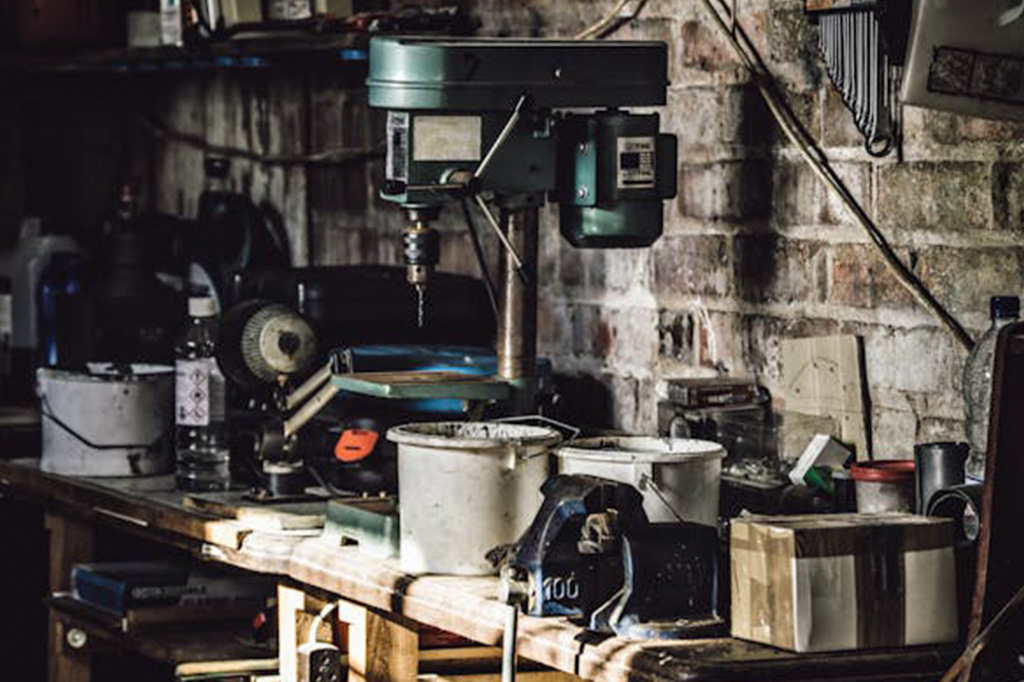The metal garage is often a space that evolves from a well-intentioned storage area to a cluttered mess over time. Tools, seasonal decorations, car supplies, gardening equipment, and household overflow items tend to find their way into corners, shelves, and even the middle of the floor.
Turning the garage back into an organized space requires patience and a plan. It can feel overwhelming at first, but approaching the task step by step makes it achievable. The key is to focus on manageable sections and avoid trying to do everything at once.
Start With a Clear Vision
Visualizing the final outcome gives the process direction. Deciding how you want to use the garage will shape the entire cleaning process. It might be a space for parking, a workshop for home projects, or a mix of storage and utility. With a clear purpose in mind, it becomes easier to determine what stays, what goes, and where each item belongs. That clarity helps reduce the emotional weight of parting with unused or broken items.
Remove Everything Before Sorting
A fresh start means getting everything out. Emptying the garage allows you to see the entire space and creates a blank canvas. As you remove items, group them in broad categories. Tools go in one area, holiday items in another, and so on. This initial sorting helps when deciding what should return to the garage and what has served its purpose. Items that no longer work or are rarely used can be sold, donated, or thrown away.
Clean the Structure Itself
Once the garage is empty, take time to clean the structure thoroughly. Sweep the floor, wipe down surfaces, and check for signs of pests or moisture. Metal garages can sometimes gather condensation that leads to rust, so inspecting the walls and ceilings can help prevent long-term issues. Using mild cleaning agents and proper ventilation during this phase helps maintain the building’s condition.
Create Zones for Functionality
Establishing clear zones helps maintain order long after the initial cleaning. Designate areas for specific purposes such as automotive supplies, sports equipment, lawn tools, and seasonal items. These zones reduce the chance of items being dropped in random places. Labeling shelves and bins reinforces each zone and makes it easier to find and return items to their proper place. Having these clear boundaries simplifies future maintenance.
Invest in Vertical Storage
Utilizing vertical space allows you to make the most of a metal garage. Wall-mounted shelving, pegboards, and hanging hooks keep items off the floor while keeping them accessible. Vertical storage is ideal for tools, gardening equipment, and sports gear. It reduces clutter and makes cleaning easier since you can sweep and mop without obstacles in the way. Strong, metal shelves offer the durability needed to support heavier items.
Use Clear Containers
Seeing what is inside a container without having to open it saves time and frustration. Transparent bins allow quick identification and help keep similar items together. Labeled containers reinforce the system and ensure nothing gets misplaced. Stacking containers of the same size adds uniformity and maximizes space. Keeping lids on containers also protects contents from dust, pests, and moisture.
Rotate Items Seasonally
Some items are only needed during certain times of the year. Lawn tools are rarely used in winter, and snow gear can be stored away during summer. Rotating items by season reduces clutter and keeps only the most relevant tools or supplies accessible. Designating one area for off-season items helps keep zones from becoming overcrowded. Taking time at the beginning of each season to rotate contents ensures that the space remains functional year-round.
Avoid the Junk Drawer Effect
Small items often collect in drawers, toolboxes, or containers without much thought. These become catch-alls for odds and ends that serve no real purpose. Tackling these spaces with intention helps avoid wasted space and confusion. Grouping small items by type, such as screws, nails, or batteries, and placing them in labeled containers creates an easy-to-maintain system. Reducing the number of catch-all spaces promotes order and saves time during future projects.
Think About Safety and Accessibility
Items that are used frequently should be stored at arm’s reach. Dangerous tools or chemicals need to be stored in childproof containers or on higher shelves. Safety gear such as goggles and gloves should be easy to find and near workstations. Creating paths free of tripping hazards ensures that the garage remains a safe environment. Lighting also plays a critical role. A clean garage with good lighting helps prevent accidents and improves efficiency.
Commit to Regular Upkeep
A one-time cleaning effort makes a big difference, but regular maintenance keeps the garage from sliding back into disorder. Setting aside time every month to assess the space allows you to spot issues early. A quick sweep, a bit of dusting, and rearranging items that have drifted from their zones go a long way. Teaching all household members to respect the organizational system ensures that it lasts longer and requires less effort in the future.
Involve Everyone Using the Space
If multiple people use the garage, they should also be part of the process. Getting input on how zones are laid out and what items are needed helps create a shared understanding of the system. It also fosters a sense of responsibility among users. When everyone understands where items go and why the system matters, they are more likely to keep things in order. Communication prevents future misunderstandings and helps maintain an organized space.
Make It a Comfortable Space
Cleaning and organizing is not just about utility. Adding personal touches like a radio, a stool, or a small workbench can make the garage more inviting. A comfortable space is one that people enjoy using, and that increases the likelihood of it staying clean. Fans or small heaters help regulate temperature, which makes the garage usable year-round. Even minor improvements like mats or extra lighting can turn a basic metal garage into a more functional part of the home.
Reflect on What Works
After completing the cleaning and organizing process, take time to reflect on what was effective. Identifying what made the biggest difference helps guide future cleanups. Maybe it was investing in better shelves, getting rid of unused tools, or finally labeling storage bins. Reflection allows you to fine-tune the system and ensures that your garage continues to serve its intended purpose. Revisiting this process a few times a year keeps the garage in top shape.
A Clean Garage Is a Better Garage
The transformation from cluttered mess to efficient workspace is entirely possible with a focused plan and consistent effort. The key lies in treating the garage with the same care as any other room in the house. With organized storage, designated zones, and regular upkeep, your metal garage can become a model of order and utility. What once felt like a chaotic dumping ground can turn into a space that supports your projects, protects your belongings, and brings a sense of calm to your home environment.

